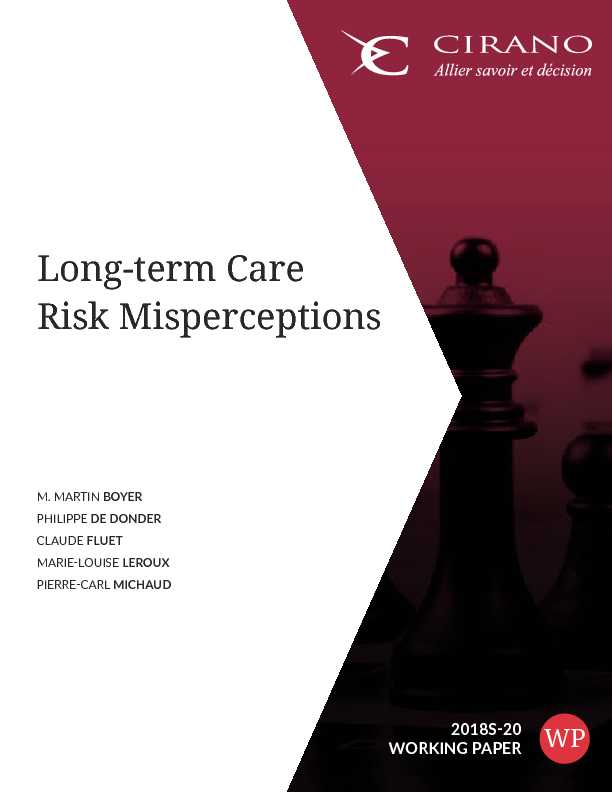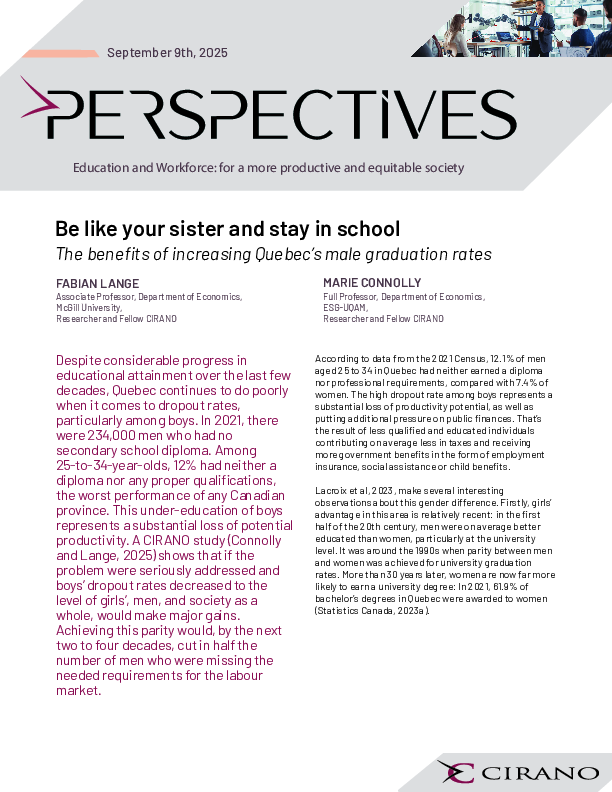Long-term Care Risk Misperceptions
This paper reports survey evidence on long-term care (LTC) risk misperceptions and demand for long-term care insurance (LTCI) in Canada. LTC risk misperceptions is divided into three different risks: needing help for at least one activity of daily life, needing access to a nursing home, and living to be 85 years old. We contrast subjective (i.e. stated) probabilities with actual probabilities for these three dimensions. We first provide descriptive statistics of how objective and subjective probabilities differ and correlate to each other. Second, we study cross-correlations between different types of risks. We then study how risk misperceptions correlate with individual characteristics, and evaluate how misperceptions affect intentions and actual purchase of LTCI. Our conclusions are two-fold. First, we find that most subjects are not well informed about their individual LTC risks, making it difficult for them to take the correct LTCI decisions. Second, and even though misperceptions explain an individuals actual or his intentions to take-up LTCI, misperceptions are unlikely to explain the poor take-up rate of LTCI in our sample.




